2016 Local Labor News
Click on link for past labor news articles: 2006 | 2007 | 2008 | 2009 | 2010 | 2011 | 2012 | 2013 | 2014 | 2015 | 2017 | 2018 | 2019
Published Dec. 16, 2016 at alternet.org
CNN Host's Attempt to Explain the U.S. Economy Was So Bad I Started Yelling at the TV
Offshoring is about the rush to cheap labor, not about automation and new technology.
By Les Leopold / AlterNet
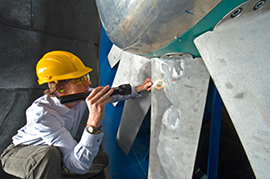 Honestly, I don't usually talk back to the TV. But I couldn't contain myself during Poppy Harlow's December 10 interview with John Feltner, the United Steelworkers vice president of the Rexnord local union where 300 jobs are moving from Indianapolis to Mexico.
Honestly, I don't usually talk back to the TV. But I couldn't contain myself during Poppy Harlow's December 10 interview with John Feltner, the United Steelworkers vice president of the Rexnord local union where 300 jobs are moving from Indianapolis to Mexico.
In discussing the move, Harlow twice resorted to the much repeated trope that the loss of American manufacturing jobs is really about automation and technology.
HARLOW: What is the number-one thing you would like to see the incoming administration do that you think will help people in your situation? Because, you know, Donald Trump points to global trade as being the reason that your jobs are going away. That's not all of it. A lot of it is, as you know well, automation and technology.
FELTNER: These companies are leaving to exploit cheap labor. That's plain and simple. If he can change those trade policies to keep those jobs here in America, that's what we need. We need American jobs, not just union jobs.
HARLOW: But you agree it won't save all of them, because of automation, because of technology.
Please Poppy, come off it! Feltner is right. Offshoring is about the rush to cheap labor, not about automation and new technology. The move to cheaper labor in Mexico, in fact, allows corporations to avoid investing in new technologies. Rexnord and Carrier are moving the same old technologies to Mexico, piece by piece. Read entire article
Published December 12, 2016 in the Everett Herald
Boeing to Make Fewer 777s; Everett Job Cuts Likely
by Dan Catchpole, staff reporter
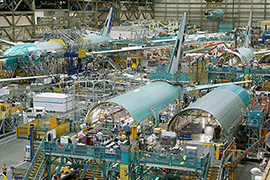 EVERETT — Cuts are coming to the Boeing Co.’s 777 line — deeper and sooner than previously planned by company leaders.
EVERETT — Cuts are coming to the Boeing Co.’s 777 line — deeper and sooner than previously planned by company leaders.
The company announced plans Monday to cut production from the current 8.3 airplanes a month to five a month in August — a roughly 40 percent cut. The decision likely will mean job cuts next year in Everett, where the 777 is assembled, though how many and exactly when is not clear.
Boeing already planned to reduce production to seven a month in early 2017. As the 777X goes into final assembly in 2018, 777 deliveries are expected to drop to about 3.5 airplanes a month.
The company has struggled to sell its classic — and profitable — long-haul workhorse as it develops a successor airliner, the 777X. Demand for twin-aisle airplanes has dried up in recent years after several years of heavy spending from airlines. Some customers also may be waiting for the 777X, which is slated to enter service in 2020. The low cost of fuel means airlines are as financially pressed to upgrade to newer, more efficient models.
Monday’s announcement comes one day after Boeing and Iran Air signed a deal that includes 15 777-300 Extended Range (ER) airplanes, with deliveries beginning in 2018.
However, that deal, which still could be sunk by Republicans in Congress, is not enough to buoy the 777 line, said Elizabeth Lund, a Boeing vice president and general manager of the 777 program. Read entire article
Published Dec. 8, 2016 in the New York Times
Trump’s Labor Pick, Andrew Puzder, Is Critic of Minimum Wage Increases
By Noam Scheiber,
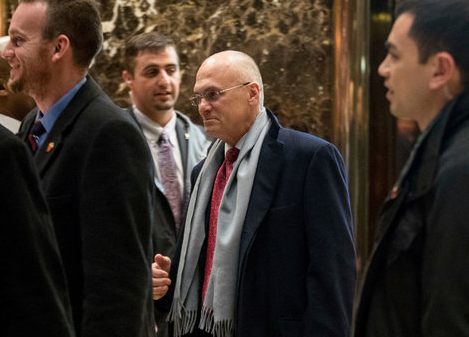 President-elect Donald J. Trump on Thursday chose Andrew F. Puzder, chief executive of the company that franchises the fast-food outlets Hardee’s and Carl’s Jr. and an outspoken critic of the worker protections enacted by the Obama administration, to be secretary of labor.
President-elect Donald J. Trump on Thursday chose Andrew F. Puzder, chief executive of the company that franchises the fast-food outlets Hardee’s and Carl’s Jr. and an outspoken critic of the worker protections enacted by the Obama administration, to be secretary of labor.
“Andy Puzder has created and boosted the careers of thousands of Americans, and his extensive record fighting for workers makes him the ideal candidate to lead the Department of Labor,” Mr. Trump said in a statement.
Mr. Puzder, 66, fits the profile of some of Mr. Trump’s other domestic cabinet appointments. He is a wealthy businessman and political donor and has a long record of promoting a conservative agenda that takes aim at President Obama’s legacy. And more than the other appointments, he resembles Mr. Trump in style.
He seems to delight in bashing elites — he complained that “big corporate interests” and “globalist companies” were supporting Hillary Clinton in the presidential election — and is prone to the occasional streak of political incorrectness.
On policy questions, he has argued that the Obama administration’s recent rule expanding eligibility for overtime pay diminishes opportunities for workers, and that significant minimum wage increases would hurt small businesses and lead to job losses.
He has criticized paid sick leave policies of the sort recently enacted for federal contractors and strongly supports repealing the Affordable Care Act, which he says has created a “government-mandated restaurant recession” because rising premiums have left people with less money to spend dining out.
Speaking to Business Insider this year, Mr. Puzder said that increased automation could be a welcome development because machines were “always polite, they always upsell, they never take a vacation, they never show up late, there’s never a slip-and-fall or an age, sex or race discrimination case.” Read entire article
Published Nov. 4, 2016 in the Puget Sound Business Journal
Boeing’s Move to China Would Ease Cramped Quarters at Renton plant and Boeing Field
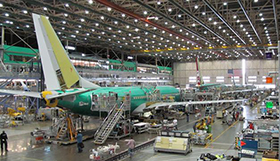 Boeing’s plans to open a 737 completion center in China are being driven in part by the jet maker’s need to free up space at Boeing’s cramped Renton plant and Boeing Field, according to a report by Aviation Week.
Boeing’s plans to open a 737 completion center in China are being driven in part by the jet maker’s need to free up space at Boeing’s cramped Renton plant and Boeing Field, according to a report by Aviation Week.
Boeing (NYSE: BA) announced the new facility in September 2015 as a joint venture between the Chicago-based aircraft manufacturer and Commercial Aircraft Corp. of China (COMAC).
In a new report Friday morning, Aviation Week said that moving production to China would give Boeing better access to the China and Asia markets. The move also would lower labor costs. And the center in China would give Boeing “a bit more elbow room” because it would free up space in Renton and at Boeing Field during a time when Boeing seeks to ramp up narrow-body aircraft production.
The Boeing Co. will soon reveal the exact location of a new 737 jet completion center in China by the end of the year, according to a report in government-run news publication China Daily.
The facility is expected to paint and install seats and entertainment systems in 100 of the 737 narrow-body passenger jets a year as Boeing increases its foothold in the important Chinese commercial market.
Boeing says the China factory will better persuade airlines there to buy its jets and won’t take work away from its 737 manufacturing operations in Renton.
http://www.bizjournals.com/seattle/news/2016/11/04/boeing-china-737-renton-comac-production.html
Published Nov. 2, 2016 in the Puget Sound Business Journal
China and Russia Plan Wide-Body Jet to Compete Against Boeing and Airbus
Andrew McIntosh,Staff Writer
Puget Sound Business Journal
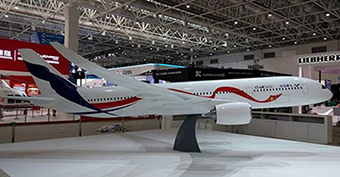 It's only a dream for now, reflected in a plastic model introduced to the world at an air show in far away China.
It's only a dream for now, reflected in a plastic model introduced to the world at an air show in far away China.
But that model has the potential to turn into a nightmare for Chicago-based Boeing (NYSE: BA), which builds its wide-body 747, 777 and 787 Dreamliner aircraft in the Puget Sound area.
Chinese and Russian aerospace manufacturing executives on Wednesday unveiled the model for the C929 wide-body jet they plan to make some day, a move that would put them in direct competition with aerospace giants Boeing and Airbus.
The aircraft would be developed in Russia and assembled in China. Commercial Aircraft Corp. of China (COMAC) and Russian partner United Aircraft Co. (UAC) said their plane will enter service in 2026 after years of testing. They pledged the joint venture will be up and running in Shanghai within a year.
The partners will invest $13 billion to $20 billion on the project, UAC President Yuri Slyusar told reporters.
COMAC officials said the new jet will have three seating classes and a range of up to 7,456 miles (12,000 km).
A Boeing Commercial Airplanes spokesman declined to comment on the project.
Videos showing the C929 unveiling at Airshow China 2016 in Zhuhai circulated widely on Twitter. The story also received big coverage on the China Aviation Daily website.
COMAC is already making the C919 narrow-body jet, which is several years behind schedule. There was precious little news about that airplane at the show. Read entire article

Buy Union Made Halloween Candy
When those little goblins and ghosts come rapping at your door, make sure you have union-made treats to fill their sacks.
This year shop for these products made by members of the Bakery, Confectionery, Tobacco Workers and Grain Millers International Union (BCTGM), United Food and Commercial Workers (UFCW), and the International Longshore and Warehouse Workers Union (ILWU).
HERSHEY PRODUCTS* Hershey Kisses Hershey Syrups Hershey Milk Chocolate Bar Hershey Milk with Almond Bars Hershey Special Dark Bars Hershey Nuggets Rolo Hershey Kissables Kit Kat Bars Carmello Bars Cadbury Fruit & Nut Bar Cadbury Roast Almond Bar Cadbury Royal Dark Bar Cadbury Dairy Milk Bar Jolly Ranchers Hershey Symphony Bar with Toffee AMERICAN LICORICE** NECCO (NEW ENGLAND CONFECTIONERY COMPANY) Mary Jane Peanut Butter Chews NECCO Wafers/ Necco Wafer Smoothies Sky Bar Clark Bar Thin Mints NECCO Assorted Junior Wafers Clark Junior Laydown Bag Mary Jane Laydown Bag Necco Peanut Butter Kisses GUITTARD CHOCOLATE |
TOOTSIE ROLL INDUSTRIES SEE'S CANDIES JELLY BELLY'S CANDY CO. GHIRADELLI CHOCOLATES All filled & non filled squares All filled & non filled bars Non pariels Chocolate chips |
NESTLE PEARSON'S CANDY CO. ANABELLE'S CANDY CO. BACHMAN Members of the United Farm Workers (UFW) help produce various fruits and nuts with the UFW label, including products from: coastal Berry Co., Swanton Berry, Montpelier Almonds, Brown Date Gardent Dates,Mann’s California Apples, and citrus fruit from Sunkist, Sunworld, Airdrome and Big Jim. |
*Some products made abroad; check the label for country of origin. **Also made at non-union plant in Laporte, Indiana |
||
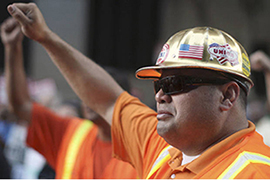 Published in www.Salon.com, updated Thursday, September 15, 2016
Published in www.Salon.com, updated Thursday, September 15, 2016
“I’m in a Union. You’re Welcome.” How Having Strong Labor Unions Helps Everyone Who Works Earn More
A new study shows that if unions were stronger, wages would be higher for union members and nonmembers alike.
By Angelo Young
Millions of Americans today earn less than their predecessors did 40 years ago, adjusted for inflation, and a big reason for that is declining private-sector union membership — which has dropped from a third of all private-sector employees to just 6.7 percent today.
A new study released today by the Economic Policy Institute, a Washington D.C.-based nonprofit that advocates for people of low and middle income, has attempted to quantify how much today’s nonunion workers would have benefitted if union membership remained as at the levels of 1979. The main takeaway: The typical full-time private-sector worker — whether a union member or not — would be making thousands of dollars more a year now if unions had the power they once did to influence a state’s or region’s standard wages and benefits packages. Read entire article
Published in www.constructiondive.com, Wednesday, August 31, 2016
 The Lingering Labor Shortage: 69% of Construction Firms Struggling to Fill Hourly Craft Positions
The Lingering Labor Shortage: 69% of Construction Firms Struggling to Fill Hourly Craft Positions
By Emily Peiffer
It’s time to stop telling children that their only path to success is a four-year college degree.
"Despite the 10% decline in firms having difficulty finding craft workers between 2015 and 2016, the 69% figure still represents a majority of the industry, and the AGC once again called on states and the federal government to promote technical training at the middle and high school levels."
-
A nationwide survey of 1,459 contractors — conducted by the Associated General Contractors of America during July and August — found that 69% are having difficulty finding workers to fill hourly craft positions.
-
Despite the fact that the 69% figure is 10% lower than last year's numbers, 75% of construction firms in this year's survey said they believe it will be difficult to find hourly craft workers over the next year.
-
Aside from the high percentage of firms reporting difficulty finding hourly craft workers, 38% reported difficulty hiring salaried field positions, 33% reported difficulty hiring salaried office positions, and 15% reported difficulty hiring hourly office positions.
As a result of the ongoing labor shortage, 48% of surveyed companies said they have increased pay for hourly craft workers, 48% have ramped up in-house training, and 47% have added more overtime hours. Read entire article
Published in The Seattle Times, Tuesday, August 30, 2016
Boeing Curtails OT Pay for 80,000 Workers in Latest Cost-Cutting Move
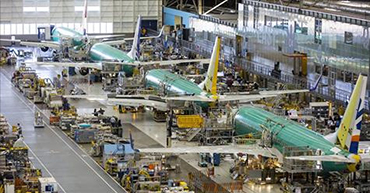 By Dominic Gates
By Dominic Gates
Aerospace reporter
In another move to cut costs, Boeing told white-collar, salaried employees across the company that overtime pay will in the future be severely limited.
In another move to cut costs, Boeing told white-collar, salaried employees across the company on Tuesday that starting next month overtime pay will be severely limited.
Citing “Boeing’s highly competitive market,” an internal memo says the company will “discontinue” paid overtime for U.S.-based salaried employees “except in the case of preapproved production- or mission-critical work.”
The new policy, effective Oct. 14, includes both nonunion salaried employees and some groups of unionized employees — including engineers. It covers about 80,000 employees, the company said.
The policy is generating a lot of buzz among white-collar staff, said one Commercial Airplanes nonunion employee, who asked not to be identified when speaking without company permission.
“For many, this is a pay cut,” the employee said. Read entire article
Published in The Economic Opportunity Institute, Tuesday, August 30, 2016
 ‘X’ Marks the Spot Where Inequality Took Root: Dig Here
‘X’ Marks the Spot Where Inequality Took Root: Dig Here
By Stan Sorscher
In 2002, I heard an economist characterizing this figure as containing a valuable economic insight. He wasn’t sure what the insight was. I have my own answer.
The economist talked of the figure as a sort of treasure map, which would lead us to the insight. “X” marks the spot. Dig here.
The graphic tells three stories.
First, we see two distinct historic periods since World War II. In the first period, workers shared the gains from productivity. In the later period, a generation of workers gained little, even as productivity continued to rise.
The second message is the very abrupt transition from the post-war historic period to the current one. Something happened in the mid-70’s to de-couple wages from productivity gains.
The third message is that workers’ wages – accounting for inflation and all the lower prices from cheap imported goods – would be double what they are now, if workers still took their share of gains in productivity.
A second version of the figure is equally provocative. Read entire article
Yes on 1433 Petition Drive Exceeds Signature Goal
The Yes on 1433 Campaign has reached 191,917 signatures and counting in their effort to get the initiative on the fall ballot. They exceeded their goal of 190,000 signatures with volunteers in four months, and the signatures are still coming in. The impressive signature total reflects the strong commitment their volunteers made to get I-1433 on the ballot, as well as the public's overwhelming support of this issue.
Because of these efforts, voters will have the long-awaited opportunity to demand support for Washington’s workers by voting to raise the minimum wage and pass paid sick & safe leave. We want to thank all the volunteers for staying dedicated to this important work-- what was accomplished these last few months will make a positive impact on Washington State for years to come.
Published June 14, 2016 at www.aljazeera.com
Boeing Stymied Staff From Talking to Regulators
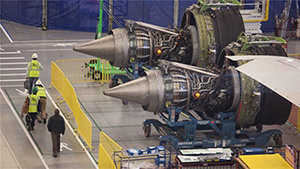 Aviation giant made engineers sign non-disclosure deals, leading to refusals to talk to the FAA and an official probe.
Aviation giant made engineers sign non-disclosure deals, leading to refusals to talk to the FAA and an official probe.
by Will Jordan
Boeing made its engineers sign a non-disclosure agreement that led some to refuse to discuss details of 787 "Dreamliner" designs with US government regulators, new documents reveal.
In 2011, the major plane and arms manufacturer made employees agree in writing that "non-public sensitive material" linked to a mysterious programme known as Project Espresso "must be safeguarded at all times and held confidential on a strict need-to-know basis".
After signing the agreement, Boeing engineers told Federal Aviation Administration (FAA) officials they were banned from speaking about specific features of the 787 passenger plane, triggering a government probe.
The engineers had signed a document that said: "I will only reveal and discuss Project Information with individuals as approved by Project Espresso sponsors." Read entire article
Published June 9, 2016 at www.bizjournals.com
This is How Much Washington State Aerospace Companies Got In Tax Breaks In the Past 2 Years
 Rachel Nielsen
Rachel Nielsen
Staff Writer Puget Sound Business Journal
Almost 300 companies have received state tax breaks totaling $553 million over the last two years as a result of Washington’s aerospace industry tax relief programs.
Most of that sum, or 93 percent, has gone to airplane maker Boeing (NYSE: BA), which got $517 million in aerospace tax breaks in 2014 and 2015.
The rest of the money, $35 million, was divided among 287 companies, most of them small and midsize businesses that typically got only tens of thousands of dollars of tax relief.
These figures come from preliminary numbers that the companies self-reported to the state’s Department of Revenue.
Boeing had disclosed the amount of its tax breaks earlier this year, when it said it had saved $305 million in 2015. In the Department of Revenue’s figures, Boeing’s 2015 tax savings worked out slightly lower, at $300 million. Read entire article
Published March 30, 2016 at kiro7.com
Boeing to Cut 4,000 Jobs, More Cuts Could Be Coming
by Henry Rosoff
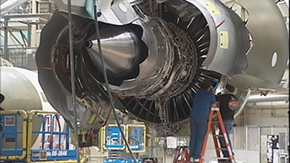 Late Tuesday Boeing confirmed it was in the process of shedding 4,000 jobs by June. The company employs about 78,000 in Washington state.
Late Tuesday Boeing confirmed it was in the process of shedding 4,000 jobs by June. The company employs about 78,000 in Washington state.
“It’s Garbage,” exclaimed assembly electrician Vince Popich outside the Renton 737 plant.
Popich is especially upset because the state of Washington gave his employer $8.7 Billion in tax breaks to ensure new 777X jobs will be created here.
“We're bending over backwards paying for it, and here they are laying off American workers, outsourcing our jobs,” Popich said.
Other Boeing workers like Dean Chinn were less worried.
“I'm not concerned,” Chinn casually said. “I have 30 something years with the company.”
According to a memo, obtained by the Seattle Times there could ultimately be up to 8,000 cuts by the end of the year.
Boeing released a statement Tuesday night:
We continue to follow our plan announced last month to make fundamental changes for the long term to win in the market, fund our growth and operate as a healthy business.
That involves a combination of non-labor cost savings, supply chain savings, and reduced staffing levels. While there is no employment reduction target, the more we can control costs as a whole-- the less impact there will be to employment.
Staffing reductions through mid-year, including hundreds of executives and managers, are projected to total approximately 4,000 positions -- none of which involve involuntary layoffs. We’ve been able to reduce staffing levels through attrition, leaving open positions unfilled, and voluntary layoffs. We’ll only use involuntary layoffs as a last resort.
Boeing's CEO recently told workers in a company-wide address any cuts would part of an overall plan to cut cost and keep up with competitor Airbus. Renton worker Mark Childress says he understand that argument.
“We are pedaling as hard as we can to stay in front of Airbus,” Childress said, adding that he thinks the jobs will be ultimately needed again once Boeing is done adjusting its business model. “As the 777X and the new 737 Max gets into full production, within two years, the jobs will all come back.”
http://www.kiro7.com/news/report-boeing-job-cuts-in-wash-state-could-hit-10/186120168
Posted by SEIU 775 on March 29, 2016
Washington’s Individual Providers Will Start Receiving Overtime
 After months of negotiation and an extra legislative session, we finally have information on how caregiver overtime will be implemented. There are some details still to be worked out, but here’s the short version: most caregivers who are already working more than 40 hours a week will continue to be able to work their same hours, and thousands of caregivers will see increased pay!
After months of negotiation and an extra legislative session, we finally have information on how caregiver overtime will be implemented. There are some details still to be worked out, but here’s the short version: most caregivers who are already working more than 40 hours a week will continue to be able to work their same hours, and thousands of caregivers will see increased pay!
Starting April 3, caregivers will be paid time and a half for all hours worked over 40 hours a week.
Caregivers who worked an average of 40 hours a week in January 2016 will be able to continue to get paid for up to 65 hours a week through June 30, 2017, and 60 hours a week after that. You will also be able to get an Exception to Rule (ETR) to be able to work additional hours beyond that for your client.
Almost 5000 caregivers will see millions of dollars in increased pay thanks to overtime!
The details of this still have to be worked out, but caseworkers will be reviewing all clients who are getting more than 65 hours of care per week from a single caregiver. None of them will get their hours cut, but some may be told they need to shift hours above 65 per week to a second provider. If you currently provide more than 65 hours a week you will be able to apply for an Exception to Rule (ETR). First, your client will be assessed—details on that process are forthcoming. Then, the ETR should be filed with your caseworker, but if you need help preparing your ETR at that time, our Member Resource Center will be able to help: call 1 (866) 371-3200 or email mrc@seiu775.org.
If you work more than 65 hours a week and you aren’t able to get an ETR to keep working those hours, we may also be able to find other ways to help you and your client get the hours you need.
There are still details to be worked out, and we will keep you updated as this rolls out over the next few weeks.
Our movement of tens of thousands of caregivers demands that caregiver voices are heard. When we fight, we win.
http://seiu775.org/washingtons-individual-providers-will-start-receiving-overtime/

Published March 19, 2016 at King5.com
Built under a Project Labor Agreement with highly skilled union labor...
University Link Light Rail Opens
It's the project that no elected official is afraid to hitch their ride to.
On Saturday morning, the University Link light rail opened to the public, six months early and $200 million under budget. The 3.1 miles of track link Westlake in downtown Seattle to Capitol Hill and the University of Washington.
Mayor Ed Murray cut a ribbon at 10 a.m. Saturday, marking the first public use of the Capitol Hill station.
"I've had an experience with trains where they're not usually late," said young Max Connolly.
He was first in line at the station with his brother Jude and father Michael.
"Let's face it: the bus gets stuck in traffic," Michael Connolly said. "I take the 545 every day. As soon as it hits Capitol Hill it can take 45 minutes to get downtown. Now I can just switch off, get on the train and be there in 6 minutes." Read entire article
Published March 17, 2016 on the Economic Policy Institute website
Report: Uber Business Model Does Not Justify a New ‘Independent Worker’ Category
 By Ross Eisenbrey and Lawrence Mishel
By Ross Eisenbrey and Lawrence Mishel
Whether drivers for ride services such as Uber and Lyft are employees or independent contractors has become an important issue for city administrators, labor policymakers, and the businesses and drivers themselves. But an increasing number of voices argue that the drivers are neither, that some work relationships arranged through digital platforms in the so-called gig economy differ so fundamentally from traditional employee or independent contractor relationships that we need a new, third category of worker.
For the most part the assertions of the need for a new category have had little substance beyond a claim that technology has changed the nature of the work that gig workers (or “app workers”) perform, making current legal categories antiquated. But a recent proposal by Seth Harris and Alan Krueger for a third status called “independent worker” (Harris and Krueger 2015a) has elevated this policy discussion in several ways. Read entire article
Published March 7, 2016 in Puget Sound Business Journal
Janicki Wins, Boeing Loses in Northrop Contracts for Air Force B-21 Bomber
Steve Wilhelm Staff Writer
Puget Sound Business Jou rnal
rnal
Washington state aerospace supplier Janicki industries will help build the Air Force’s next-generation B-21 bomber. But the company's big brother, Boeing (NYSE: BA) company, won't be joining the party.
On Monday the Air Force announced seven companies nationwide that will support Northrop Grumman in building the stealthy new bomber, a project that's estimated to cost upwards of $23 billion.
By far the smallest was Janicki, a family-owned company located in the town of Sedro Woolley in Northwest Washington. The town is so obscure, at least from a Washington, D.C. perspective, that Secretary of the Air Force Deborah Lee James stumbled in her effort to pronounced it correctly during a press conference Monday. Read entire article
 Published March 6, 2016 at Kiro7.com
Published March 6, 2016 at Kiro7.com
State Minimum Wage Increase Could Go to Voters in November
Raising the state's minimum wage could be on November's ballot.
A statewide effort to gather enough signatures kicked off Saturday across the state and it has the support of two presidential hopefuls.
"Could I ask you to sign a petition to raise the minimum wage in Washington state?" Danica Johnson asked while stopping two people on Capitol Hill.
Johnson doesn’t work minimum wage jobs anymore, but she is volunteering to increase wages for those who are.
"It's going to be a really, really incredible change for 1 million workers in Washington state," she told one man signing a petition.
If approved, Washington's minimum wage would go from $9.47 an hour to $13.50, phased in over the next four years. Read entire article
Associated Press & KOMO Staff Wednesday, February 10th 2016
Boeing to Cut Commercial Airplane Workforce, Starting with Execs
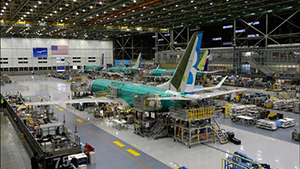 The Boeing Co. says it will be eliminating commercial airplane jobs as part of a cost-cutting effort.
The Boeing Co. says it will be eliminating commercial airplane jobs as part of a cost-cutting effort.
The company provided no specific numbers but Doug Alder, spokesman for the aerospace giant, said in a statement Wednesday the company would begin the reductions with executives and managers.
Alder said the reductions would ultimately affect "employment levels across all" of the commercial airplane unit. Attrition and voluntary layoffs would be used at first. However Alder said "involuntary layoffs may be necessary."
Boeing Commercial Airplanes chief executive Ray Conner announced the job action Wednesday in a webcast to all employees, Alder said.
Boeing approached the International Association of Machinists union last week to discuss a voluntary layoff program.
http://komonews.com/news/local/boeing-to-cut-commercial-airplane-workforce-starting-with-execs
Published February 12, 2016 in thestand.org
Senate Republicans Shame, Harm State with Lynn Peterson’s Firing
By Jeff Johnson, The Stand
 Everyone knows that if you have the votes, you can exercise power. Of course, how power is exercised, makes a difference.
Everyone knows that if you have the votes, you can exercise power. Of course, how power is exercised, makes a difference.
On Friday, Republicans who hold a narrow majority in the Senate embarrassed the Legislature and harmed the state with a crass political attack on Governor Jay Inslee and Department of Transportation Secretary Lynn Peterson. They did this by not confirming — read: immediately firing — Peterson after three years on the job.
Secretary Peterson, a nationally recognized transportation leader, has been praised for her leadership in directing the expedited bridge replacement over the Skagit River. Last year, she was entrusted with leading on a $16 billion transportation package. And last June, she was unanimously recommended by the Republican-led Senate Transportation Committee for confirmation to her position, which had been inexplicably delayed.
But on Friday, in an election year for the governor, she was condemned by anecdote on the Senate floor. She was personally blamed for problems she inherited, like cost overruns on the Highway 520 bridge replacement and the Bertha machine breakdown that has caused a two-year delay on the Highway 99 tunnel. Read entire article
Originally published September 8, 2014 in the Huffington Post
Why Collective Bargaining Is a Fundamental Human Right
By Robert Creamer, Political Organizer, Strategist, Author; Partner Democracy Partners
The ability for ordinary working people to organize and collectively bargain over their wages and working conditions is a fundamental human right. It is a right just as critical to a democratic society as the right to free speech and the right to vote.
Over the last 30 years many in corporate America and the big Wall Street banks have conducted a sustained attack on that human right. Unionization dropped from 20.1 percent of the workforce in 1983 to 11. 3 percent in 2013 -- and the results are there for everyone to see.
During that period productivity and Gross Domestic Product per capita both increased by roughly 80 percent in America. But the wages of ordinary Americans have remained stagnant. Virtually all of the fruits of that increased productivity have gone to the wealthiest 1 percent of Americans.
No wonder the gang on Wall Street opposes unions. Read entire article
Published January 14, 2016 in thestand.org by the Washington State Nurses Association
WSNA Wins Decision Against ‘On Call’ Rest Breaks for Nurses
 For years, Tacoma General Hospital had covered nurse rest breaks by using a buddy system that had nurses taking a double load of patients while their colleagues were on their legally mandated breaks. The system meant that nurses were essentially “on call” during their breaks to respond to any urgent or emergent issues that might arise with their patients.
For years, Tacoma General Hospital had covered nurse rest breaks by using a buddy system that had nurses taking a double load of patients while their colleagues were on their legally mandated breaks. The system meant that nurses were essentially “on call” during their breaks to respond to any urgent or emergent issues that might arise with their patients.
Being “on call” is not a real break. That was the decision reached by an arbitrator in response to the Washington State Nurses Association’s grievance, and subsequent arbitration, against MultiCare Health System, which owns the hospital.
In a groundbreaking decision, the arbitrator stated that the buddy system does not work, failing to give nurses true breaks from responsibility for their patients and from nursing’s physically and mentally demanding work:
“The requirement of a nurse on break to be ‘on call’ diminishes the purpose of a break from work. Nursing requires knowledge, experience, dedication and concentration, tempered with compassion and patience, to successfully care for patients in need." Read entire article
Published January 6, 2016 in Education Week
Are Teachers' Unions Finished?
 By Walt Gardner
By Walt Gardner
If the plaintiffs in Friedrichs v. California Teachers Association prevail before the U.S. Supreme Court, the decision will be the beginning of the end of teachers' unions in this country ("The Enemies of Choice," UnionWatch, Dec. 29, 2015). It would abolish agency fees, which are paid to the union by nonmembers in exchange for bargaining services. Already there are ominous signs that teachers' unions are on the ropes.
Membership has plummeted to 50 percent nationwide from a high of almost 70 percent in 1993. Wisconsin, Michigan and Indiana are now right-to-work states, with other states likely to follow. What's so disturbing is that younger teachers are largely behind the decline in membership. They take for granted the rights that veteran teachers fought for and won in past decades. They naively believe that they're better off without unions. Read entire article